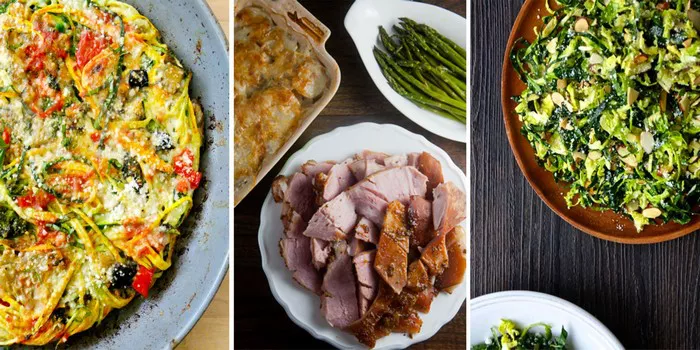In the early days, all over China, whether it was a county or a small town, as long as there were people living together, there would always be soy sauce gardens to meet the daily needs of the people. In the world of Chinese sauces, sauces from different regions have their own personalities. The southern coast is deliciously fresh, the southwest is spicy, and the north is salty and sweet… Without sauce, China’s food landscape would be like Thanos. A snap of the fingers and half of it may disappear.
1. Pixian bean paste
It is spicy, bright red and oily, with large chili pieces, sweet aftertaste, mellow fragrance without adding any spices, and oily color without adding a drop of red oil. It is the “soul of Sichuan cuisine” – Pixian Doubanjiang.
Every vat of doubanjiang is cared for day and night. Before the sun comes up and after it goes down, the craftsman uses a special bamboo stick to pound the sauce vat up and down evenly. The lid of the vat is opened and exposed to the sun during the day and dew at night. It takes at least 365 days to achieve the perfect result.
In addition, Pixian County is located in Chengdu, close to the 3,000-meter-high mountain in the west, which is especially suitable for the survival of microorganisms that ferment bean paste. Sichuan people believe that black bean paste with clear oil on the surface is the best bean paste.
2. Bald butter
“Tuyuan butter” is a Suzhou dialect, “tu” means “unique” and “pure”, and “butter” refers to high-purity crab powder.
Only crab paste and crab roe are used, lard is stir-fried at low temperature, minced ginger and perilla are used to remove the fishy smell, and chicken soup is seasoned with light salt to reduce the juice, creating a yellow-orange, fragrant and delicious mouth-watering dish. Ten forty-two crabs can only accumulate fifty or sixty grams of yellow essence.
3. Yunnan Chicken Fir Oil
The shorter the appreciation period of food, the more people miss it.
During the rainy season of July and August, I enjoyed the supreme sweetness of the “fat hen of the plant world” – the local chicken stewed with gallinopsis mushrooms. Yunnan people would seal this delicious taste in jars and wait until the gallinopsis leaves the market. Come out to taste and enjoy the fragrant aroma of wild mushrooms all year round.
Slowly fry the mushrooms, dried chili peppers, Sichuan peppercorns, etc. in oil over low heat. After drying, store them in a jar with the fried oil to lock in freshness.
4. Chaoshan Sand Tea Sauce
Chaoshan Shacha Sauce is made with boiled peanut oil as the base and fried peanut kernels as the core, plus the deliciousness of fish and shrimp, the crispness of sesame, the sweetness of sugar, and the unique aroma of onions, ginger and garlic. It has the rich taste of peanuts and is the soul of Chaoshan cuisine.
5. Northeast soybean paste
Northeastern miso is divided into plate sauce and stew sauce. To make plate sauce, you need to wait for 365 days. In the twelfth lunar month of the first year, you need to select full-sized corn kernels, fry them in a pot until they turn red, then grind them into powder with a stone mill, add boiling water to knead them into a dough, and place them in a relatively warm place in the house to allow them to ferment naturally. .
On April 18th or April 28th of the second year of the lunar calendar, it is the day when the sauce is served. On the first day, stew the selected soybeans until they are cooked, grind them into bean paste, and put them into the tank together with sauce primer, water and coarse salt.
6. Beijing Sesame Sauce
The favorite sesame sauce noodles in summer in old Beijing, the noodles are chewy, the cucumber is refreshing, and the mellow sesame sauce is poured in. It feels like the sesame sauce is the protagonist. No wonder Mr. Lao She said, “Beijing people cannot live without sesame paste in summer.”
7. Hong Kong XO Sauce
Anyone who likes Cantonese food knows XO sauce. It is a sauce made from high-end ingredients such as Jinhua ham, scallops and dried shrimps. It can be called a master of umami.
It is said that XO sauce is a seasoning invented by Mr. Huang Binghua when he was the executive chef of the Peninsula Hotel in Hong Kong. It first appeared in Hong Kong restaurants in the 1980s.
The earliest prototype of XO sauce was shrimp paste made from small silver shrimps added with salt and fermented. Later, Hong Kong people discovered that slow-frying shrimps in warm oil can fully decompose the protein in shrimps into delicious amino acids and lock in freshness at the same time. Salted fermentation can easily turn into a “smelly” failure.
Conclusion:
In the vibrant world of Chinese cuisine, sauces play a pivotal role in creating flavors that captivate the senses. Among the array of Chinese sauces, soy sauce takes the crown as the most popular and widely used, known for its umami-rich depth. However, the world of Chinese sauces is incredibly diverse, offering an array of tastes and textures that elevate dishes to new heights. From the sweet and savory harmony of hoisin sauce to the fiery kick of chili sauce, each Chinese sauce brings its unique essence to the table.























